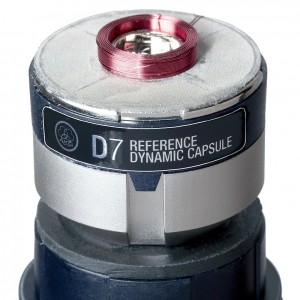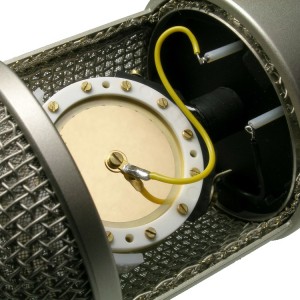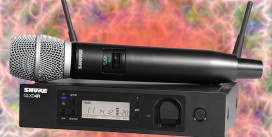The purpose of any microphone is to convert sound into an electrical signal. This process is called transduction and it can be achieved in a number of ways. Depending on the principle used, scholars would distinguish microphones into different types. Although this list may include a dozen of different items, you’ll be most often hearing about the condenser and dynamic microphones. This pair is very flexible and can easily cover most of the uses, from singing to recording of drums. However, they have some significant differences, which are quite important to understand.
Dynamic microphones

Dynamic microphones work similar to speakers. Inside such mic, a round membrane connects to a coil, which is positioned between magnets. This construction allows the vibrations caused by sound to induce a voltage in the coil. Thus, the acoustic energy is being effectively transformed into electrical energy. Speakers do exactly the opposite, though using the same principle. Such microphones are relatively easy to manufacture. They are usually cheap and unpretentious, and can withstand harsh conditions.
Among other advantages, dynamic mics can best tolerate high sound pressure. They are thus typically being used for live performances and recording of loud sounds such as from drums or percussion instruments. On the other hand, they have its own limitations. Due to use of coils, extra weight is being added to the membrane. This sets a number of requirements, particularly for the diaphragm thickness, which limits its sensitivity. The sounds may lose clarity to a degree, but it will also depend on the mic.
Another thing you should know is that the membranes of dynamic mics typically have a non-linear frequency response. This means their usage will be most effective only in a particular frequency range. Good news, there are many dynamic mics to choose from for each specific usage, be it singing, drums or double bass. Also note: the directional patterns of dynamic microphones are limited to cardioid, supercardioid and omnidirectional. You can read more about patterns in our other guide.
Condenser microphones
Condenser microphones have a more sophisticated design than dynamics. The diaphragm of a condenser microphone is electrically conductive but unlike the other, it does not produce any voltage by itself. Instead, the vibrations cause changes in capacitance between the movable diaphragm and another fixed plate. This has to be further converted into electrical signal, for which purpose condenser mics use some built-in electronics. They also require a source of external power, usually being powered through the same cord that connects them to a preamp.

Condenser mics have a much higher sensitivity. The diaphragm of such microphones can be made as thin as 3 microns, allowing it to capture even the subtlest sounds that are normally not heard by humans. This is especially true for ones that have a large diaphragm. Any diaphragm of about an inch in diameter is considered large. Large diaphragm condensers produce less noise but are also more expensive. Keep in mind; the larger diaphragms have a more prominent proximity effect, resulting in a lower frequency boost when placed near the source of sound.
Condenser microphones are most often used for studio recordings. You may also use them whenever precision and quality becomes important. If you have a rough voice, or especially if you use screaming, then you’re better off with dynamic mic. Rock bands also tend to use dynamic mics more often. As for live performance, condenser mics can still be used but with caution. For example, a peaceful performance from someone singing and playing piano should go without any problems, but if you plan to rumble on open air or some underground club then a condenser mic would be a no-no.
Finally, the condenser mics should always be handled with care. Not only their membranes are more sensitive, they also have electronics inside that may not tolerate shock. This is especially true for high-end models using vacuum tubes meant to improve the sound quality. Condenser mics also do not like the humidity. If the membrane gets moist, it may result in some cracking sounds. Fortunately, this is only a temporary effect. At last, for those who don’t like to read much, here is an informative video that not only explains the differences but also lets you actually hear it.








“the directional patterns of dynamic microphones are limited to cardioid, supercardioid and omnidirectional…” huh? they can also be hypercardiod. nice recap though